Dell XPS 13 Review
by Brett Howse on February 19, 2015 9:00 AM EST- Posted in
- Laptops
- Dell
- Ultrabook
- Broadwell-U
- XPS 13
Gaming Performance
Normally on an Ultrabook we would not dedicate an entire page to gaming performance, because the integrated GPUs do not perform very well on our gaming tests. However, with this being our first example of Broadwell-U, it is a good time to revisit this and see how the new graphics capabilities of Broadwell compare to the Haswell processors.
With the Core i5-5200U in both of the XPS 13s that we received, we have 24 execution units, compared to only 20 on Haswell-U. In addition, the 14nm process should help with throttling. The FHD model (1920x1080) arrived with a two 2GB memory modules and the QHD+ version came with 2 x 4GB.
First, let's look at the synthetic benchmarks, starting with 3DMark and then moving on to GFXBench.
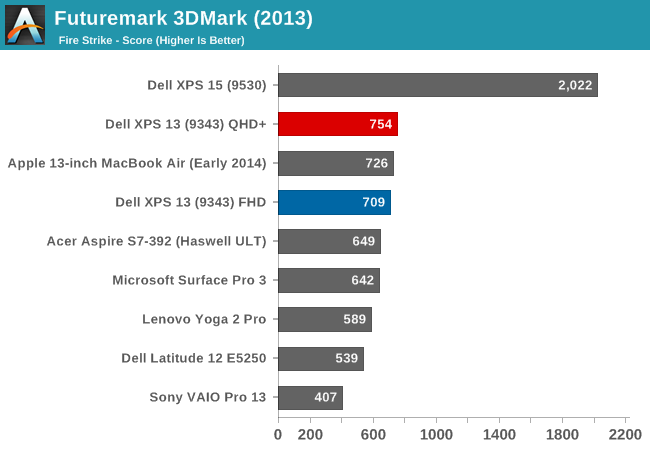
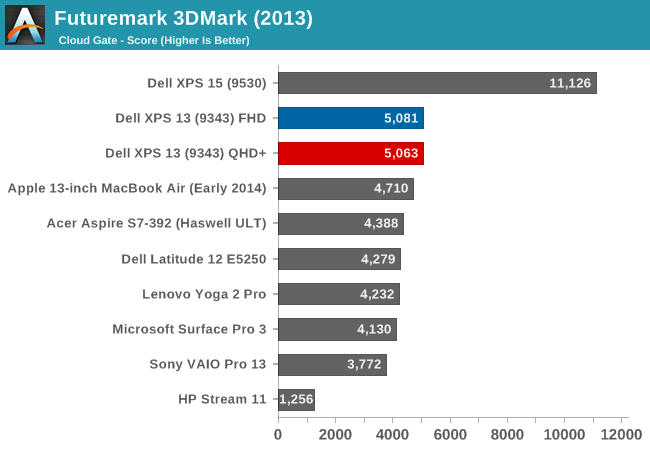
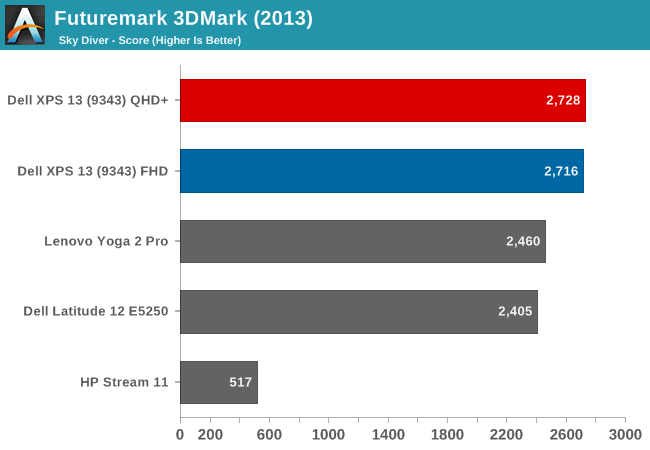

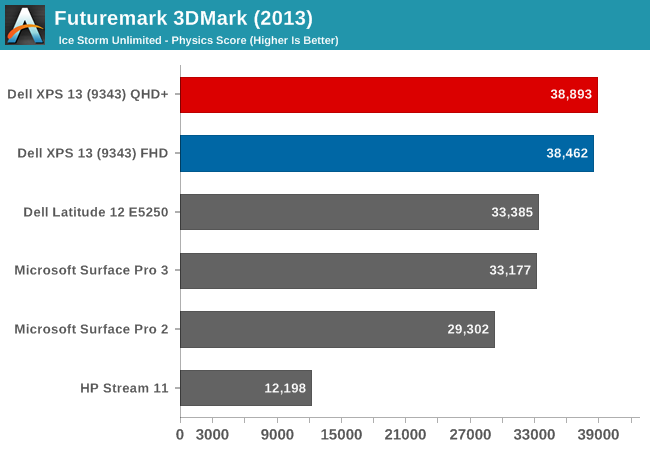
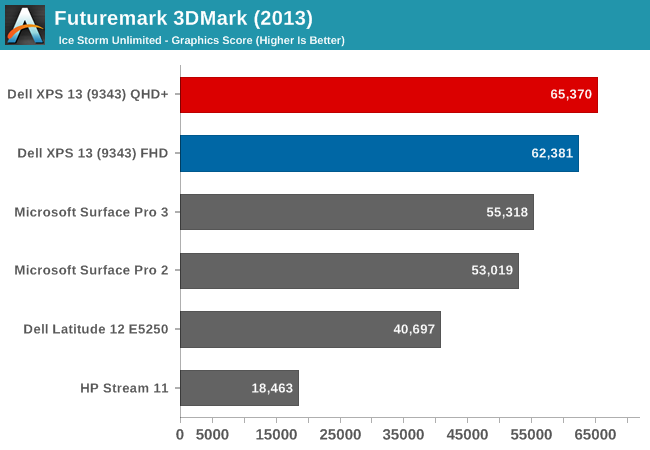
The 3DMark results begin to show the increased GPU performance of the Gen8 graphics. Broadwell-U outperforms all of the Haswell-U parts on all of the tests, and the QHD+ model gave a fraction more performance as well in a few tests.

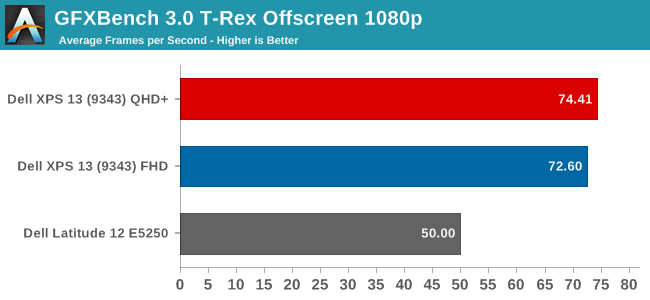

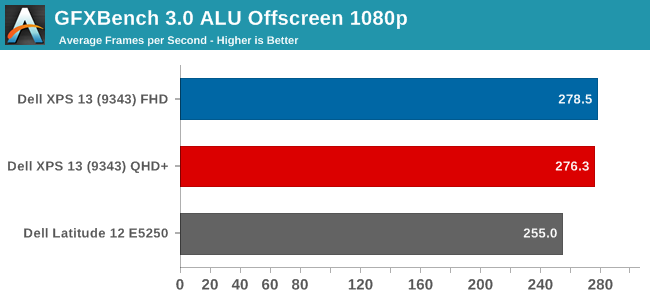
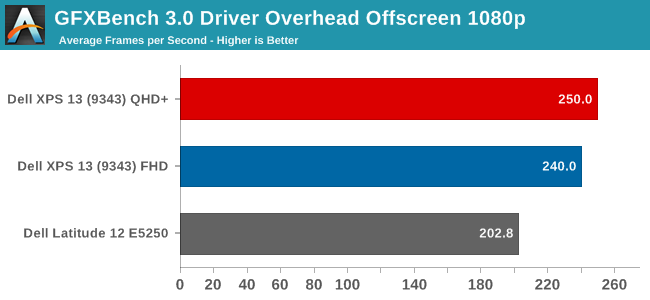
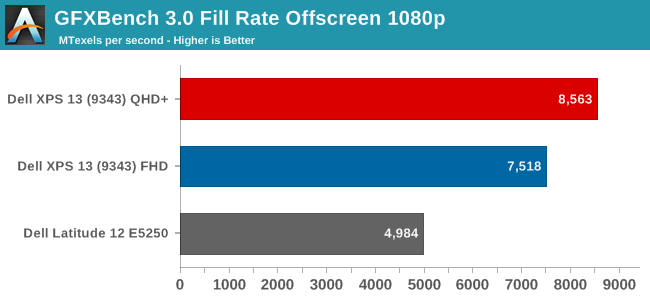
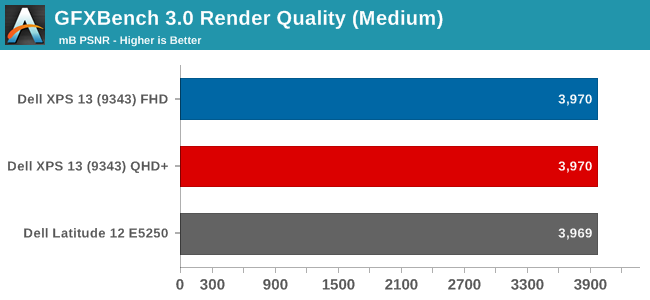
The initial results for the new GPU look pretty good, with the new GPU soundly beating the Haswell-U parts. The HP Stream 11, with just 4 EUs, trails quite far behind. GFXBench is one of our newer benchmark choices for Windows 8, and we will add more data as we get a few more devices to test.
Next, let's look at our gaming benchmarks. Due to the low performance of the integrated GPUs, I just ran our gaming tests at the Value (1366x768 ~Medium) settings.

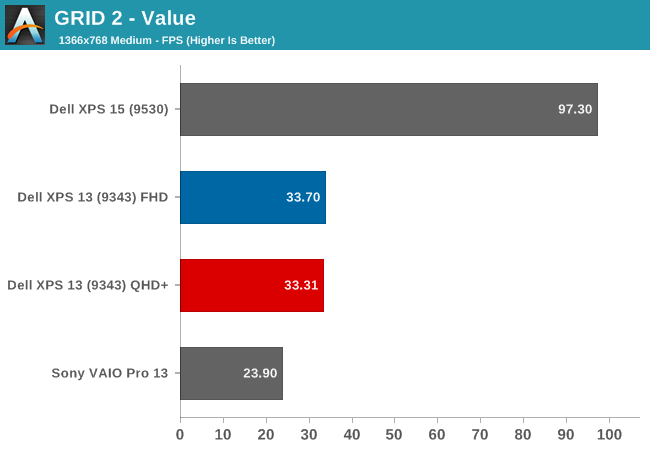

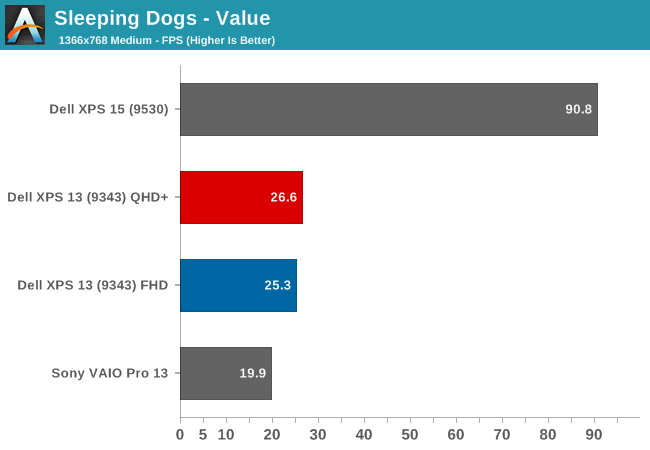
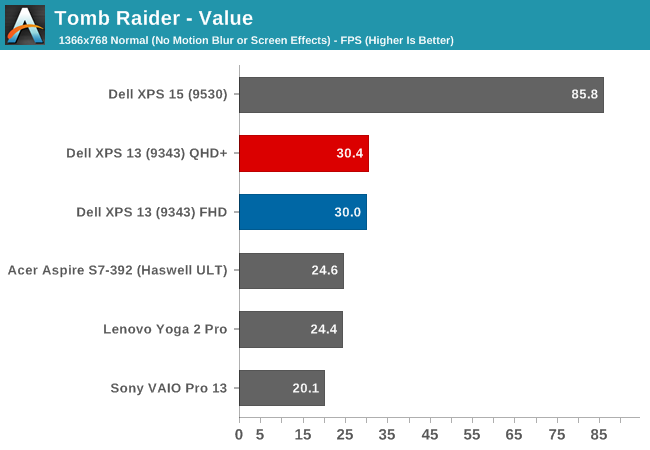
Here we can see once again that the new GPU is certainly stronger, but it is still not quite enough to make any of these games very playable on our Value settings. The Dell XPS 15, with its discrete GPU, carries a huge lead over the integrated GPU offerings. Still, the new Gen8 Graphics with more execution units per processor, as well as a change to the architecture of each execution unit, has made a healthy improvement. The new GPU has only eight EUs per sub-slice now, as compared to ten in Haswell-U, which help in many workloads. Ian has a nice writeup on the changes.
However, our gaming benchmarks are not tested at the lowest possible settings. All of the benchmarks start at 1366x768 with medium settings, so let's drop down another notch.
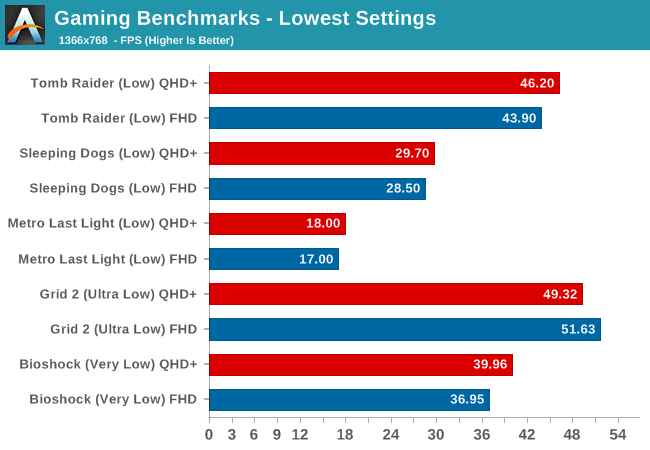
By setting the games to their lowest settings, some of them are now playable. We are still a long ways off of the performance of a discrete GPU, but slowly integrated graphics are improving.
Finally, we have a new gaming benchmark to add to our repertoire. Anand first used the DOTA 2 bench for the Surface Pro 3 review and it will be our go-to benchmark for devices like this without a discrete GPU. Our Value setting will be 1366x768 with all options off, low quality shadows, and medium textures. Midrange will be 1600x900 with all options enabled, medium shadows, and medium textures, and Enthusiast will be 1920x1080 with all options maxed out.
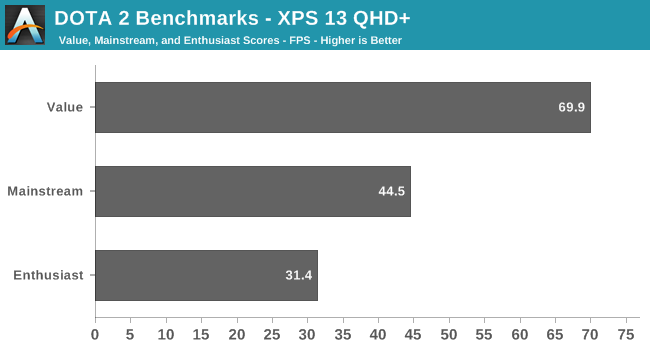
We do not have any other comparison points at the moment, but it is very clear that a game like DOTA 2 is very playable on a device with an integrated GPU. Frame rates, even with good settings, are very reasonable.
So Broadwell has raised the stakes again, but the end result is Intel's Integrated GPU is still not going to let you play AAA titles with good frame rates. Hopefully we can get some good comparisons between Broadwell-U and the AMD APUs in the near future. It will also be interesting to see what happens on the higher wattage Broadwell parts, some of which will contain significantly more EUs.










201 Comments
View All Comments
eanazag - Monday, February 23, 2015 - link
A few take-aways from the article numbers -8 GB of RAM is necessary to boost the graphics numbers in most cases for the IGP. Sometimes the boost is very small, but it is there.
Apple's display is looking pretty substandard compared to the numbers of the other devices.
The battery life of the new Dell is remarkable; Apple needs to hit better numbers to be comparable as Windows is harder on battery life than OSX.
I had a chance to look at this device in person about a week ago. It is a nice device, yet the build quality in hand feels better on the Razer Blade all around. Not Apples to Apples though because the price difference and components. At the end of the day I wanted the Blade more so.
The Dell battery accessory is the best thing about this whole article because I deal with Dell at work. As someone who is caught in Dell's ecosystem that accessory is well thought out for versatility. I could use this for multiple devices that I carry and my users could too.
eanazag - Monday, February 23, 2015 - link
Is the RAM and SSD upgradable by user (or power user)?milkod2001 - Tuesday, February 24, 2015 - link
RAM: noSSD: yes
sonicmerlin - Tuesday, February 24, 2015 - link
Just wanted to point out the iPad Air 2 gets the same scores in GFXBench's Trex and Manhattan tests (offscreen). So Apple's tablet SoC has the same graphical power as Intel's ultra book chips, despite operating at a much lower TDP.sonicmerlin - Tuesday, February 24, 2015 - link
By scores I mean FPS.candl - Tuesday, February 24, 2015 - link
I couldn't find anywhere, but can the SSD drive be replaced? Or does it void warranty (or worse, it's actually soldered to the mainboard)?candl - Tuesday, February 24, 2015 - link
Ok, should have investigated further. The SSD is apparently replaceable. Sorry.miahshodan - Tuesday, February 24, 2015 - link
Am I the only one that does not want 16:9 especially in a screen that small. At least give me 16:10 so I can actually put something other than video on the screen without a scroll-fest. That is one thing that makes the surface 3 so appealing to me.ilkhan - Wednesday, February 25, 2015 - link
no internal pictures?Can you upgrade the SSD and/or memory?
Johnmcl7 - Sunday, March 1, 2015 - link
No internal picture seems to be part of the reviews now which is disappointing particularly as these days the internal accessibility of parts can vary considerably.Thankfully Ifixit have posted a full teardown, the SSD is upgradeable and easy to access but the ram isn't as it's soldered on.